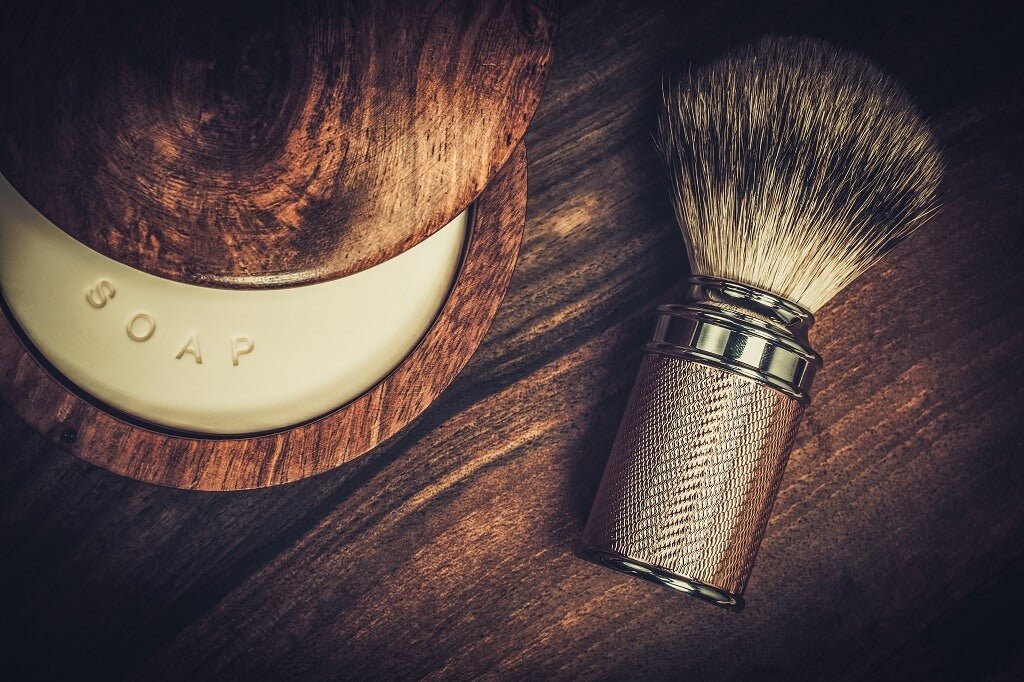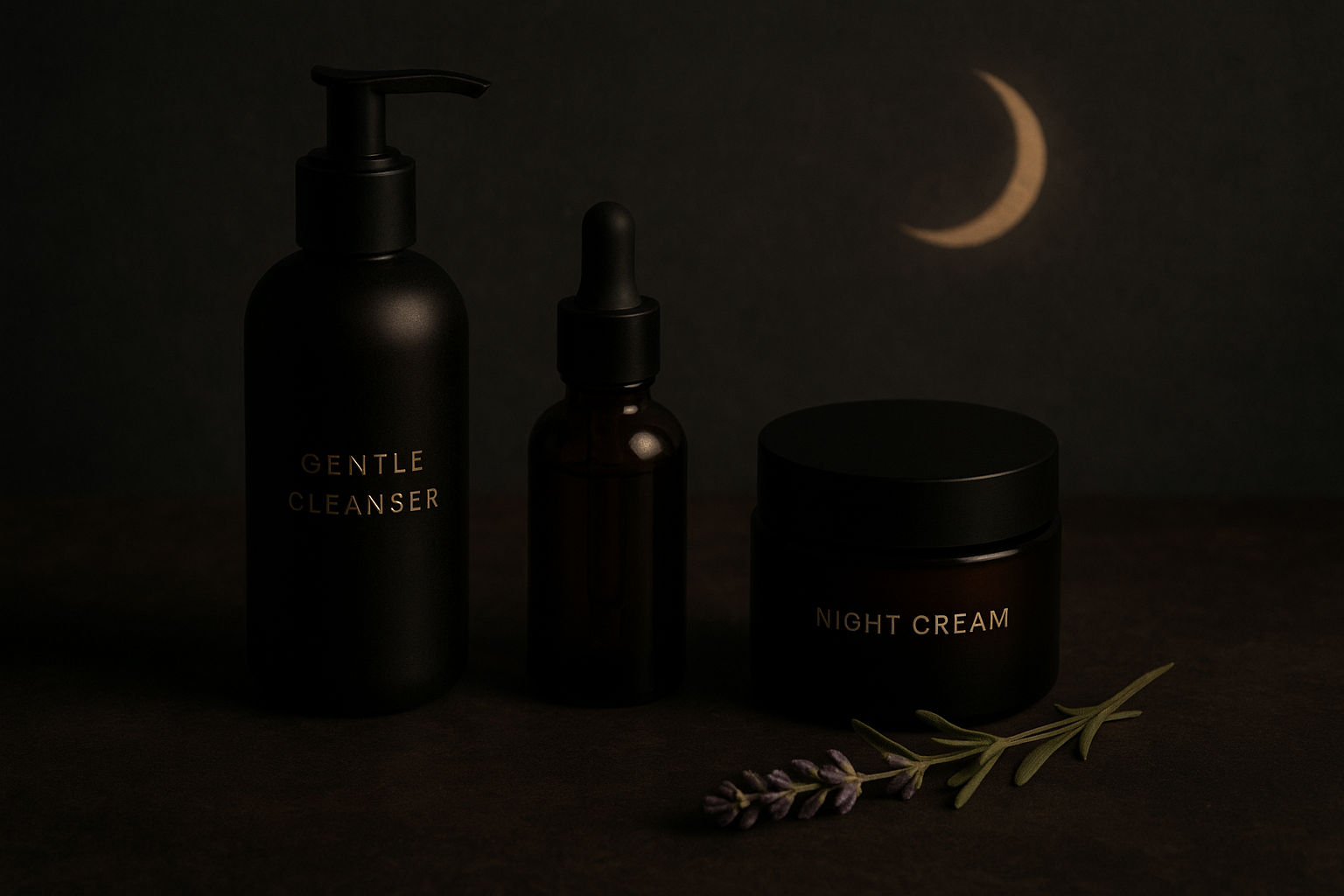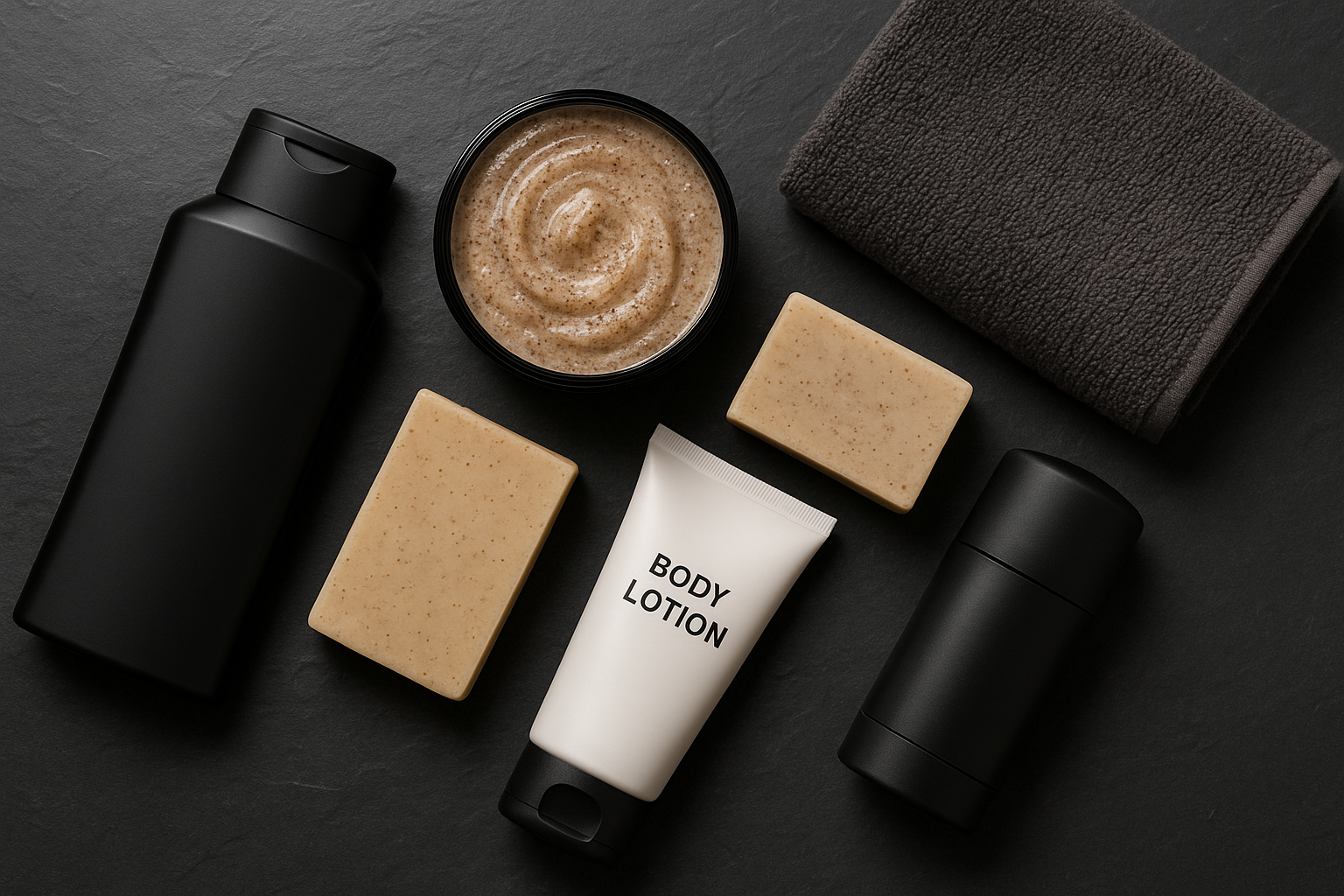One of my earliest memories related to my grandfather is how proudly he took care of his grooming kit.
It was really simple.
Single safety razor with couple of spares, rustiq bristle brush and a tiny piece of hard white soap. I never truly understood why he went through all that trouble when he could’ve gone the easy road and get a foam and a cartridge razor.
I held that opinion until I got a fresh wet shave at the barber, and I made sure he was using the same soap brand as my grandad.
What makes soap the smart choice?
Besides feeling like a WWII pilot on the battlefront, soap brings series of health benefits you need to consider before going with some of the more popular choices.
This article will try to bring both soft and hard shaving soaps closer to you and compare them to other solutions like foams and balms.
Let’s teach you how to lather.
What is shaving soap
There are couple of different types of shaving soaps. We will stick to the good old hard shaving soap that requires good shave brush lathering before application.
The main reason why we focus on this particular type is because we believe it provides a more pleasant shaving experience.
Tinned soft and cream like soaps became the more popular choice after WWI and they’ve kinda stuck with people before foams and gels hit the market.
The main difference between hard bar soap and other more liquid fragranced alternatives hides in the amount of water and chemicals used in the mixture.
Here are some of the more common types of soap:
- Triple-Milled: If you’re looking for a long lasting product that will stick on your shelf for months, the process of triple-milling is what creates a dry recycled bar of soap that will moisturize your beard before shaving. You can grind your own leftovers and even add some essential oils to spruce things up while melting the mixture. Spread it in some simple mold and you’re ready to go.
- Semi-Hard: Something between the thick triple-milled soap and the foamier croap. This is still a solid soap, but because of its lover density it will melt faster and last shorter. When making your own semi-hard soap at the comfort of your kitchen, you’ll need to use a little bit more than just old bars of soap. Some of the common ingredients include natural derived butters, essential and carrier oils. Instead of a mold, you’ll be forced to use a jar or a tin.
- Croap/Cream: The closest thing you’ll get to a shaving foam. The texture of the croap is a lot lighter compared to the hard and semi-hard options. The ingredients remain the same, but you’ll need to use a whisker to achieve that light foamy density.
The modern man has to make a choice between these three soaps based on his personal experience.
We will analyze how the traditional hard bar soap affects your skin and compare it to other products.
Hope this section answers all of your questions and helps you make your pick.
Why use a shaving soap
The main purpose of each shaving soap is to moisturize your skin and make your beard softer, so it’s easier for you to shave through your facial hair without pulling.
Thanks to the composition of the hard bar soap, it acts both as cleanser and moisturizer at the same time. Like any other soap, shaving bars are filled with natural oils and alkalis like sodium or potassium hydroxide. Combined with glycerin, soaps can really mess up your skin’s pH value and cause problems like debris accumulation or even beard dandruff.
To battle this unpleasant experience you’ll need to add natural oil blends or a simple skin pommade to your regular grooming routine.
Talking hard shaving soaps, some effort is required to lather up using a classic brush, but at the end you’ll get a strong mixture ready to be applied on your face. Because of the strong density, you’ll get a thick texture on your beard that’s easier to cut through.
The soap will clean up all natural oils including sebum from your facial hair and leave enough room for hot water to soften your beard. This way you put yourself in a position where you can avoid some of the more common shaving problems like skin irritation and ingrown hair.
Besides attacking problems caused by lack of hydration and facial hair texture, when applied correctly (something we’ll cover later on) soap will allow you to make a clean cut and your razor won’t pull your hair.
This is pretty important, especially for people that are constantly on the go, but need to keep a high level of appearance. Contrary to popular belief soaps are the more economical choice because of their long lasting shelf life.
Before we compare this classic grooming product with other shaving solutions it’s good to emphasize some of the biggest reasons why you need soap in your life:
- Cleanse your beard and face from debris and bacteria, making the use of a strong alcohol based aftershave obsolete;
- Remove all natural oils allowing hot water to make your facial hair softer;
- Moisturize your beard and skin at the moment of shaving;
- Makes the cut cleaner so your razor doesn’t pull while shaving, leaving no room for ingrown hair;
- Lasts longer and saves you money;
- It’s easy to transport it when you’re on the move.
Now you know why you should start using a shaving soap, but let’s see is there something better for you out there before you make the first cut.
Here’s how shaving soap compares to other shaving products.
Shaving soap Vs shaving cream (traditional)
Soap and cream (croap) have tons of similarities, but they provide a very different hold when applied on your beard. Soaps are more simple and don’t necessarily have all those fancy ingredients like essential oils and shea butter, which is not what we can say for modern day traditional creams.
Here are some of the main differences when we compare shaving soaps and creams:
- Lather:Only the most experienced gentleman among us possess the knowledge of creating the perfect soap lather with their 30 year old shaving brush in no time. There are some techniques you could master that we’ll outline later on, but the reality is you’ll need to put an effort to develop a good thick lather from your shaving soap. The same doesn’t apply for creams as they’re foamier in nature due to the production process we previously described.
- Scent:Shaving cream has a more powerful odor compared to soaps because it can include essential oils in its mixture. These oils are extremely potent and require dilution in base oils before they can be applied on your skin. Both of these products act as cleansers, so if you’re using your aftershave solely because of its scent, you can start looking for a smell-matching cream. If you’re more of a no-scent guy, then soap is all you really need.
- Cut:Due to the solid texture soap based lather makes when applied on your beard it’s more manageable and you can use more hot water while shaving without being afraid your lather dissolving. This makes your facial hair softer giving you the ability to make a cleaner and closer cut compared to the lather you get with creams. This has huge implication on how prone are you to cuts, rashes and ingrown hair.
When choosing between lathering with shaving cream or soap it’s always a good idea to take into consideration your personal shaving experience and all the problems you’ve already faced.
Whatever you decide to go with either of them, you won’t make a mistake.
It will always be better compared to artificial gels and foams and here’s why:
Shaving Soap & Cream vs Gel & Foam
The number one reason why you can’t find that many DIY gel & foam recipes online is because they’re filled with artificial ingredients.
You can make soap and cream from scratch. The first one requires you go through a time consuming process if you’re not recycling, but it can be done.
We can’t say the same for the average foam available in every store nowadays. There are tons of harmful ingredients including alcohol based compounds that will dry off your skin and facial hair.
Although this is ok with some people, majority of you would just love to stop the rash on their chin or below the neckline. This quest is not achievable with gels and foams due to their artificially enhanced composition.
Here’s a list of reasons why soaps and creams are better than gels and foams:
- Keeping your skin hydrated;
- Composed solely out of organically derived elements;
- Softening up your facial hair, allowing you to make a closer cut;
- Making a closer cut puts pulled and ingrown hair out of the picture;
- Won’t cause rashes due to their mild composition;
- Act as a cleaner of your facial hair and battle debris really well.
Pressurized foam and modern gels are certainly the easier way to go, but you must accept the fact you’ll shock your beard with harmful ingredients ranging from isobutane to potassium stearate.
To put this into perspective, here’s everything you need to make your own homemade shaving soap:
- Aloe Vera gel,
- Liquid Castille soap,
- Almond oil,
- Distilled water,
- Lavender essential oil.
Notice the difference?
You can make an all organic soap or cream, but you can’t just go on and stir up a gel or foam.
It’s clear how soaps are the superior solution. They will solve all your shaving issues, so let’s see what’s the easiest way to create a thick solid lather.
How to use shaving soap
The ideal result you’re aiming for is a thick yet foamy lather that’s easy to apply on your beard.
You’ll hear different advice from each man in your family tree, so we’ve decided to test some shaving myths and create a step-by-step guide filled with useful info.
Hopefully, at the end of this process, you’ll get a nice thick foamy lather with no bubbles, that’s easy to spread with a simple boar bristle brush.
Before we help you build an economy friendly shaving kit, let’s teach you how to lather:
- Damp your boar bristle brush - You don’t want water running everywhere. Just enough to make your shaving brush a little bit damp. Splash it under a running faucet and shake off unnecessary water before brushing through your soap.
- Rub it in your dry shaving soap - Rub the brush in circular motion going through the soap and make sure you’re not producing bubbles or that your soap is still to dry. This means you’re not using the right amount of water. When done right, the tips of your shaving brush should come together, forming a thick cream-like compound.
- Don’t lather on your soap - If you want your soap to last longer and keep its hardiness, you’ll want to take the cream you’ve created and place it in a bowl or directly splash it on your beard with your hands. You’ll get the best results with a bowl as you’ll be able to beat the croap with your brush like you’re whiskering eggs.
- Add water - You got the cream production process right, and now it’s time to create a thick lather with your brush. The first step is to add couple of drops of water and swirl through the cream in your bowl.
- Adjust thickness - You don’t want large bubbles and thin density. This means you’ve either put too much water or you put it too quickly. Try to stir some more until you get a foam like composition. If you’re not even close, add more cream by repeating Step 1or just start from the top.
- Ready to apply - Use your brush to apply the lather on your face and always make sure you have some left in the bowl so you can add if necessary.
Experiment with your technique and stick to the ideal amount of water once you find what works.
Remember how good lather can be achieved only by using the right tools.
Ideal set-up for shaving with shaving soap
Shaving habits haven’t changed that much over time. The shaving soap we know today, the classic triple-milled version, is available in this shape and form since the 19th century.
The Williams Mug Soap was the first soap that promoted usage of mugs rather than a scuttle and it started selling during the 1980’s all across the US.
It’s true how straight and safety razors were lot more popular in the past, before we got lazy and comfortable with the usage of electronic and low quality cartridge razors. This shift in trends opened the door to odor rich alcohol based aftershave and the usage of products like pre-shave oil.
The one thing that remained constant is the shaving brush. Just make sure you go with either a boar or badger not only because they’re natural, but also because they create a more quality foam.
The Perfect Shaving Kit
Shaving soap
Don’t be cheap when you’re choosing your shaving soap. Low price bargain products are usually just recycled and dried bath soaps packed in a bin. You want a brand that includes natural ingredients like essential and carrier oils as a part of their blend.
Glycerin is another component that can do wonders for the quality of your cut. It acts as a moisturizer of your beard, which is enough for your facial hair to separate from your skin, allowing for a cleaner cut and no hair pulling.
Don’t be afraid to spend $25/£18 on a high quality soap as it will last months, maybe even a year, depending on how often you shave.
Shaving brush
There are three popular types of shaving brushes you can choose from:
- Synthetic hair;
- Boar bristle;
- Badger bristle;
One of the main reasons why you’ll need to go with either boar or badger bristle brush, is because they’re prone to creating a strong foam mixture. Another hidden benefit a good brush brings to the table is skin exfoliation, which is great for people with rash sensitive skin.
Safety or cartridge razor
We’ll leave the straight razor for the more experienced hand and would suggest you use a single blade safety razor before cartridge razors. It provides a cleaner cut and you have a greater control on the angle, giving you more space to experiment with the depth of your shave.
If you’re using the right shaving soap and you manage to whisker up some decent lather, safety razors can be a powerful weapon that will make your shave a painless and fast experience.
Shaving bowl
This is not a requirement as you can foam up using solely your palms, but you’ll always get better results by swirling your brush in a bowl. You can use a spare bowl from your kitchen or go with a classier solution that will last forever.
Ceramic is a good choice of material, but you can also go with a wooden or clay bowl, depending from your style and personal preference.
Pre-shave oil (great for sensitive skins)
Beard oils are huge in the grooming market today, and the funniest thing about them is they’re made solely out of organic oils and glycerin at times.
If you go with a product that has natural oils in it, you probably don’t need a pre-shave oil. But, if you’re a romantic stuck with his childhood brand and you’re constantly battling rashes, it’s probably a smart idea to start applying oil before shaving.
You don’t need to put any effort into searching since we already got you covered with our Seven Potions Pre Shave Oil.
Aftershave
The reason why we’re rooting for you to choose a soap filled with natural oils is because we want you to take good care of your skin. If you have sensitive skin, go with an alcohol free solution and compensate on scent with some potent essential oil like thyme or peppermint in your soap.
Conclusion
Using a high quality triple-milled shaving soap will solve some of your biggest skin related shaving issues.
Having a quality shaving brush and a sharp safety razor allows you to make a closer cut while avoiding to pull your facial hair.
Be smart with your choice and don’t be afraid to ask your questions in the comment section.
Main image courtesy: NejroN /BigStock.com



